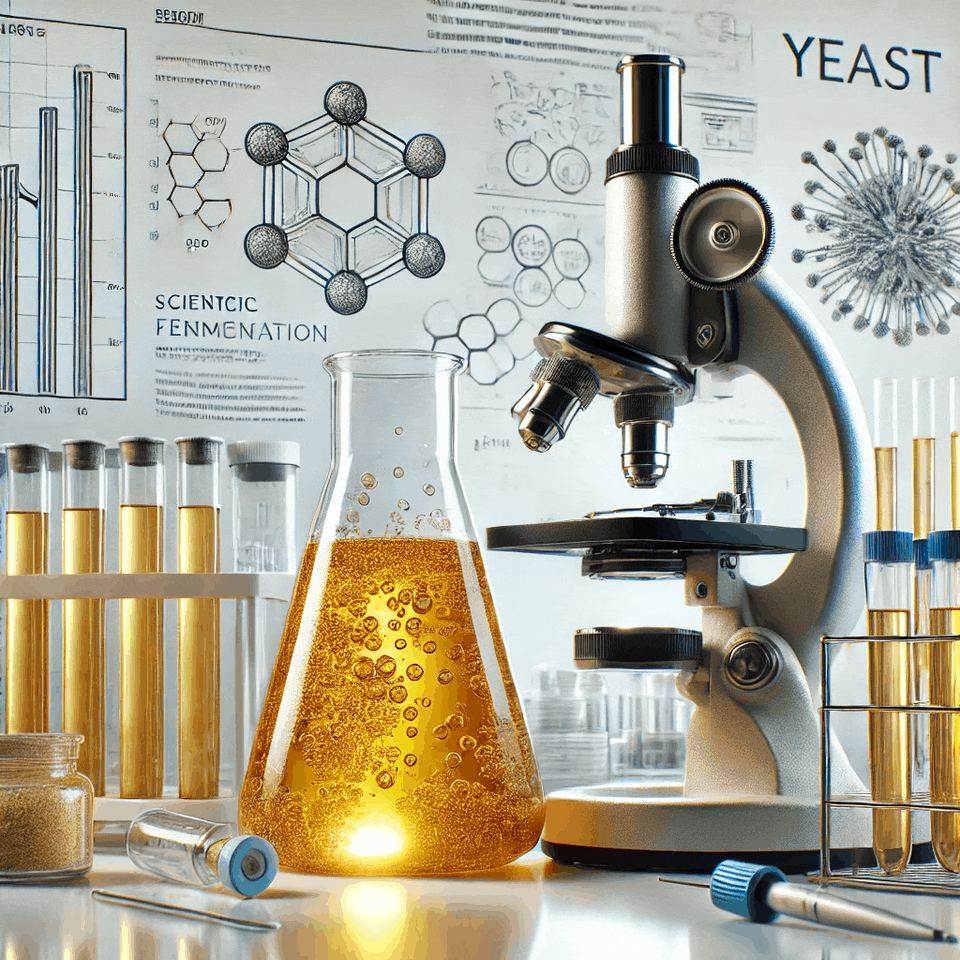Yeast plays a crucial role in the creation of mead, transforming the sugars in honey into alcohol and carbon dioxide through the process of fermentation. While honey and water are the primary ingredients of mead, it is yeast that determines how these ingredients transform into the final product. Different strains of yeast contribute a wide array of flavors, aromas, and alcohol content, influencing the drink in more ways than many realize. Understanding the science behind yeast, its fermentation process, and how different strains behave is essential for both novice and experienced meadmakers.
What is Yeast’s Role in Meadmaking?
Yeast is a microorganism that ferments the sugars in honey, converting them into alcohol. In the process, yeast also creates byproducts like esters, phenols, and other compounds that contribute to the aroma and flavor profile of mead. The choice of yeast strain is a critical decision for brewers because it can greatly affect the character of the final beverage. The metabolism of yeast during fermentation involves the breakdown of glucose, fructose, and other sugars, producing ethanol and carbon dioxide as primary products.
Choosing the Right Yeast Strain for Mead
There are many different strains of yeast available to meadmakers, each with its own fermentation characteristics. Wine yeast strains are commonly used, but some brewers prefer beer yeast or even wild yeasts to create unique flavors. Common yeast strains for mead include Lalvin D-47, EC-1118, and K1V-1116. Each strain has different temperature ranges, fermentation speeds, and the ability to highlight certain flavors in the honey. For example, D-47 is known for producing meads with a smooth, floral finish, making it ideal for lighter, delicately flavored meads, while EC-1118 is a workhorse strain that can ferment at a range of temperatures and produce a clean, dry profile.
In addition to these general strains, specific types of yeast are often chosen to enhance particular mead styles. Red wine yeasts, such as RC212 or BM4x4, are frequently favored when making fruit-forward meads like melomels, especially those using darker berries like blackberries, blueberries, or raspberries. These yeasts are known for enhancing the richness and depth of fruit flavors, providing a robust structure and fuller body, which can help balance the tartness of the berries with the natural sweetness of honey. Red wine yeasts can also contribute to the tannic structure of the mead, adding complexity and a smoother mouthfeel.
How Yeast Affects Flavor and Aroma
During fermentation, yeast produces a variety of compounds that directly influence the flavor and aroma of mead. For example, esters can impart fruity notes, such as banana or apple, while phenols can add spicy or smoky characteristics, reminiscent of clove or pepper. The temperature at which fermentation occurs plays a significant role in determining which compounds are produced. Warmer temperatures can encourage more ester production, leading to a fruitier mead, while cooler temperatures can result in a cleaner, more neutral profile.
Managing Yeast Health During Fermentation
A critical aspect of fermentation management is ensuring that yeast remains healthy throughout the process. This involves providing adequate nutrients, managing oxygen levels, and maintaining proper temperature control. Yeast nutrients, such as diammonium phosphate (DAP), are often added to ensure that yeast has the nitrogen it needs to ferment efficiently. Without these nutrients, yeast can become stressed, leading to sluggish fermentation or the production of off-flavors such as sulfuric or fusel alcohol notes.
However, many meadmakers prefer using organic yeast nutrients like Fermaid O over synthetic options such as DAP. Fermaid O is derived from autolyzed yeast, providing a balanced supply of amino acids, vitamins, and minerals without the need for synthetic additives. Organic nutrients like Fermaid O are gentler on yeast, offering a more gradual release of nitrogen, which helps avoid sudden spikes that can overwhelm the yeast. This balanced approach promotes a healthier fermentation environment, reducing the risk of harsh flavors and improving the overall complexity of the final product.
Case Studies: Yeast Experimentation in Meadmaking
Many meadmakers have experimented with different yeast strains to explore their impact on flavor and mouthfeel. For example, some brewers have found success using hybrid yeast strains, which combine characteristics of both wine and beer yeasts, to create complex flavor profiles. Others have explored wild fermentation techniques, where naturally occurring yeasts in the environment ferment the honey. While wild fermentations can yield unique and highly localized flavors, they also carry the risk of unpredictability and spoilage.
Conclusion: The Art of Selecting the Perfect Yeast
The role of yeast in meadmaking cannot be overstated. While honey provides the raw material, it’s the yeast that transforms it into a drinkable form, contributing its own unique flavors and characteristics along the way. Understanding the influence of different yeast strains allows meadmakers to create a wide variety of meads, each with its own distinct personality. With the right strain and careful fermentation management, brewers can shape their mead to highlight the best aspects of their chosen ingredients.

